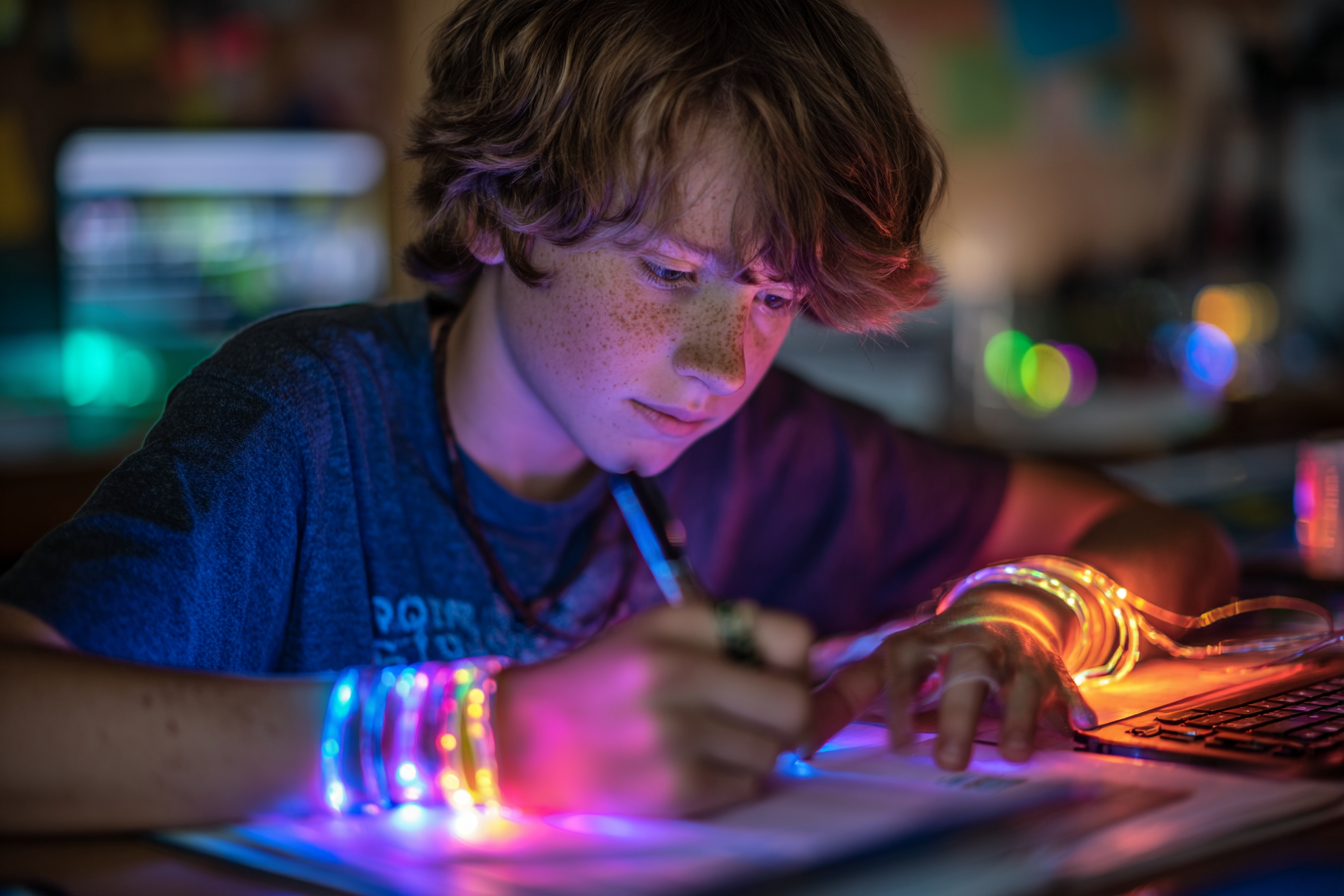Lesson Plan (Grades 6–8): Coding with Wearables – LED Mood Bracelets
Build wearable LED mood bracelets: wire microcontroller & sensors, code color patterns, test & refine for engaging grades 6-8 STEAM learning.

Lesson Title: Coding with Wearables – LED Mood Bracelets
Grade Level: Grades 6–8
Subject Area: Computer Science (Physical Computing) / Electronics / Human–Machine Interaction
Overview Wearable technology is transforming how we interact with our environment—from fitness trackers that monitor heart rate to smart clothing that changes color based on mood. In this engaging, multi-session STEM lesson, students become wearable-tech designers by building and programming their own LED “mood bracelets.” Using a micro:bit or Arduino Nano platform, addressable LEDs (NeoPixels), and simple sensors (tilt switch, light-dependent resistor, and pushbutton), learners will explore basic circuitry, sensor integration, and programming logic. They will define “mood states” (e.g., calm, energetic, contemplative) and map each to a unique LED color or animation. Through iterative design and real-world testing—wearing their bracelets outdoors, in dim rooms, or while moving—students refine sensor thresholds and patterns for reliable performance. Teachers will find comprehensive guidance on objectives, materials, step-by-step procedures, differentiation strategies, assessments, and extensions to ensure a highly relevant and hands-on experience.
Objectives and Standards
Learning Objectives
- Circuit Construction: Students will wire a microcontroller, NeoPixel LED strip, tilt sensor, photocell, and pushbutton on a breadboard, understanding component connections and the role of resistors.
- Programming Fundamentals: Learners will write code (MakeCode for micro:bit or Arduino C++) to read sensor inputs and drive LEDs, implementing conditional statements and loops to switch between mood patterns.
- Mood Mapping: Teams will define at least three distinct “mood states” (e.g., calm=soft blue pulse, alert=rapid red flash, contemplative=slow rainbow cycle) and map them to sensor triggers or manual selection via button.
- Sensor Calibration: Students will test their bracelets under various lighting and motion conditions, record sensor readings, and adjust code thresholds for robust detection.
- Human–Machine Interaction: Learners will reflect on how sensor feedback and LED responses create intuitive interfaces, considering ergonomics and user experience in wearable design.
- Iterative Design: Based on testing data, teams will refine both hardware mounting and software logic to improve reliability and usability of the mood bracelets.
Standards Alignment
- ISTE Standards for Students
- 1.4.b: Use digital tools to plan and manage a technical project, solving real-world problems.
- 1.4.d: Understand and use technology systems to perform tasks and debug simple technical problems.
- Computer Science Teachers Association (CSTA) K–12 Standards
- 1A-AP-08: Model daily processes by creating and following algorithms (sensor-driven state changes).
- 1A-AP-10: Develop programs that accomplish specific tasks, including debugging errors.
- NGSS Engineering Practices
- MS-ETS1-2: Evaluate competing design solutions based on prioritized criteria and trade-offs.
- MS-ETS1-4: Develop a model to generate data for iterative testing and modification of a proposed object.